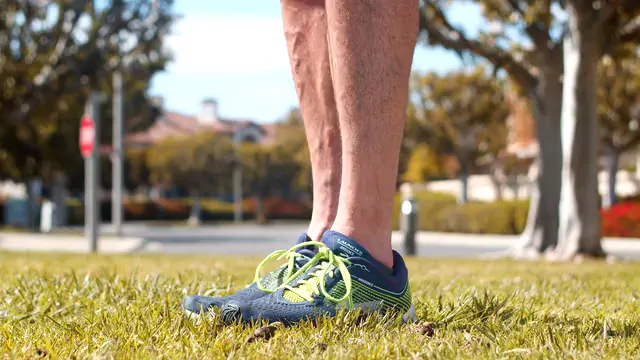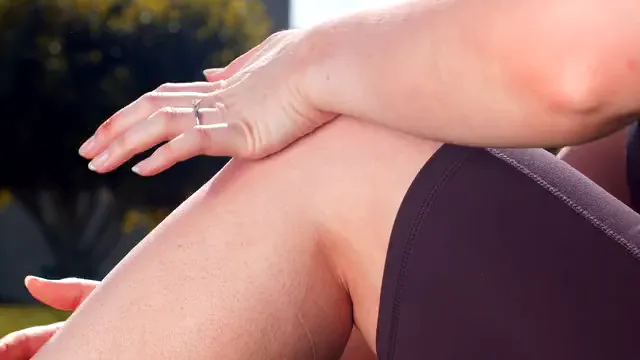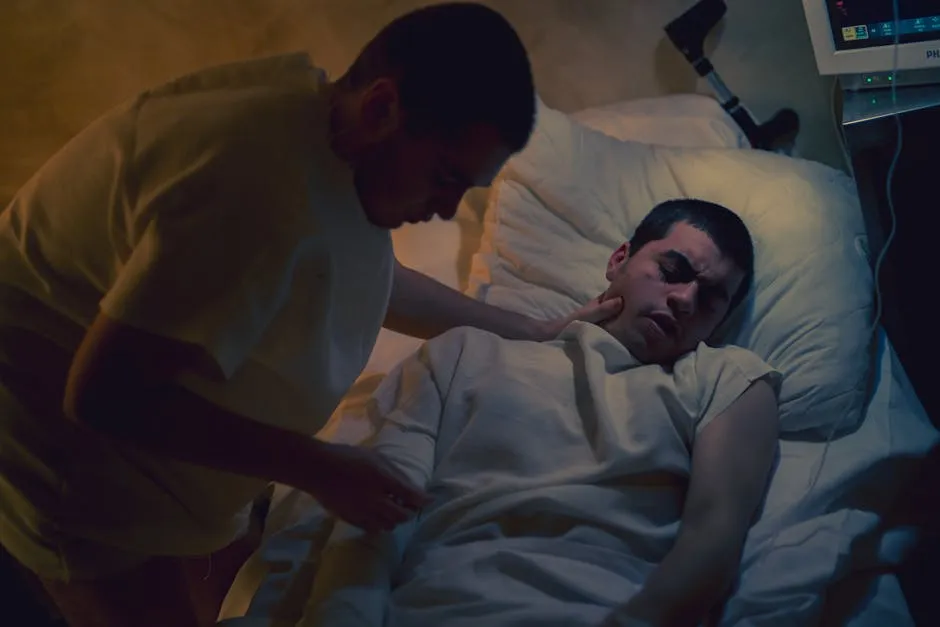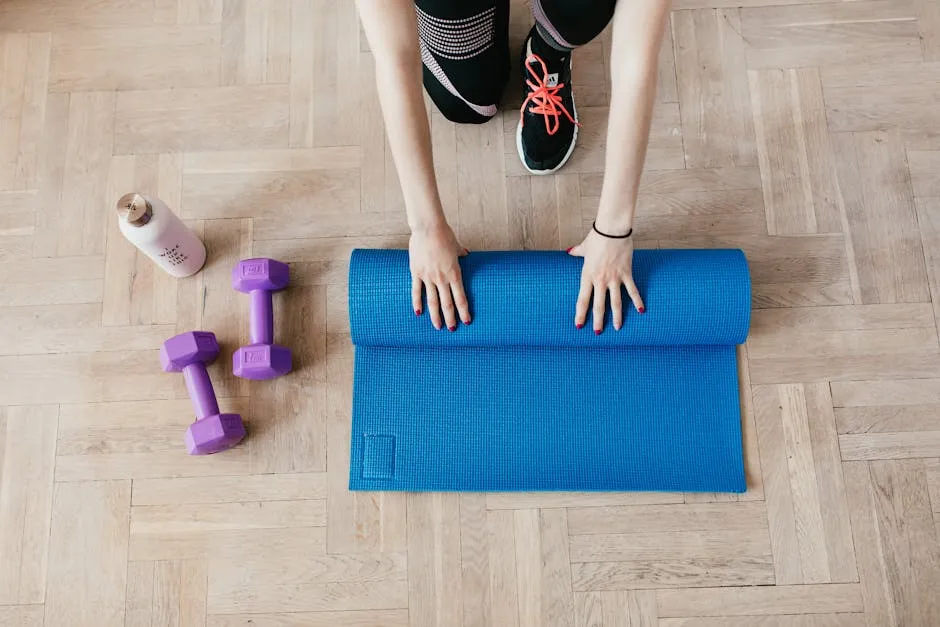
Why Do My Legs Ache at Night? Understanding Causes and Solutions
Did you know that about 8.5 million people in the U.S. are affected by PAD? Regular vascular health screenings can help you stay informed about your circulatory system’s health.

Medications
Certain medications can lead to leg pain as a side effect. Common culprits include diuretics, which can cause dehydration and muscle cramps. Antidepressants and statins have also been linked to leg discomfort. Blood pressure medications may contribute to circulatory issues, causing aching. It’s crucial to consult with a healthcare provider if you suspect your medication is causing problems. They can help adjust your treatment plan. Always communicate any side effects you experience to ensure you receive the right care.
Treatment Options for Leg Pain at Night
Home Remedies
Finding relief for nighttime leg pain can often be achieved with simple home remedies. Stretching your legs before bed is effective. Focus on calf stretches by flexing your foot and holding for 30 seconds. Staying hydrated is equally important; aim for at least eight glasses of water daily to support muscle function. Applying heat with a heating pad can relax tight muscles, while ice packs can reduce inflammation. Consider trying these remedies and tracking their effectiveness. You might be surprised by how much better you feel!

For those who love a good soak, adding Epsom Salt for Bath can help relax your muscles and ease tension. Just don’t forget to bring a good book or your favorite playlist!
Lifestyle Changes
Making specific lifestyle changes can significantly alleviate leg pain at night. Regular exercise is essential; aim for at least 30 minutes of physical activity most days. This helps improve circulation and muscle strength. Additionally, choose supportive footwear that provides proper arch support. Avoid high heels or flat shoes that lack cushioning. Practicing good sleep hygiene, like maintaining a consistent sleep schedule, can also help. Consider these changes to see a difference in your nighttime leg discomfort. Regular exercise, including balance exercises, can be particularly beneficial.
Incorporating balance exercises into your routine can enhance stability and reduce leg pain. Learn more about why balance exercises are important.
And if you’re looking for some extra support, consider trying Compression Socks. They can help improve circulation and reduce swelling, especially if you’re on your feet all day!
When to Seek Medical Attention
If your leg pain at night becomes persistent, it’s time to act. Occasional discomfort is common, but constant pain may signal a more serious issue. Pay attention to how often you experience pain and its intensity.
Seek medical evaluation if the pain disrupts your daily life or sleep. Early diagnosis can lead to better outcomes. Talk to your healthcare provider about your symptoms, especially if they worsen or are accompanied by swelling or changes in skin color. Taking action sooner rather than later is crucial for effective management.
If your symptoms remain concerning, consider scheduling an appointment for a thorough evaluation. Your health is worth it!

What lifestyle changes can help reduce nighttime leg pain?
Making a few lifestyle adjustments can greatly ease nighttime leg pain. First, focus on hydration. Drinking plenty of water throughout the day keeps your muscles functioning well. Aim for at least eight glasses daily. Consider tracking your intake to ensure you’re meeting your hydration goals.
Next, regular exercise is vital. Aim for at least 30 minutes of physical activity most days. Activities like walking, cycling, or swimming improve circulation and strengthen your leg muscles. Just be cautious not to overdo it. Stretching before bedtime can also help prevent cramps.
Finally, pay attention to your footwear. Choose supportive shoes that fit properly. Avoid high heels or shoes with inadequate support, as they can contribute to leg pain. By making these simple changes, you can reduce discomfort and improve your sleep quality.

If you’re still struggling to get a good night’s sleep, perhaps a Sleep Mask might help block out light and create a peaceful environment. Sweet dreams await!
How can I tell if my leg pain is from RLS or cramps?
Distinguishing between Restless Legs Syndrome (RLS) and muscle cramps can be tricky. RLS often presents as an irresistible urge to move your legs. This sensation can feel like crawling or tingling, especially when you’re at rest. It typically worsens at night, making it hard to relax.
On the other hand, muscle cramps are sudden, painful contractions. You may feel sharp pain in your calf, thigh, or foot. Cramps can last from seconds to several minutes and often leave soreness afterward. If you’re unsure, consider keeping a symptom diary. Document when the pain occurs, along with its nature and intensity. This can help you and your doctor identify the underlying cause.
Please let us know what you think about our content by leaving a comment down below!
Thank you for reading till here 🙂

And remember, if you’re looking to enhance your home relaxation experience, a Essential Oil Diffuser can fill the air with calming scents that promote relaxation and help you unwind after a long day.
For those who enjoy a little pampering, don’t forget to check out a Foot Spa Bath Massager. It’s the perfect way to soothe tired feet after a long day!
All images from Pexels
To prevent cramps, stay hydrated and consider stretching your legs before bedtime. Keeping a hydration diary can help you track your fluid intake and ensure you’re meeting your needs. Remember, up to 60% of adults experience nocturnal cramps, so you’re definitely not alone!

If you’re looking for a way to soothe those cramps, consider investing in a Heating Pad for Pain Relief. It can provide the warmth and comfort your muscles need to relax and ease those pesky cramps!
Restless Legs Syndrome (RLS)
Restless Legs Syndrome (RLS) is a neurological condition characterized by an uncontrollable urge to move your legs. This sensation usually worsens at night, making it difficult to relax and fall asleep. Many people describe it as a creeping or crawling feeling in their legs.
RLS can significantly impact your sleep quality, leading to daytime fatigue and irritability. The exact cause of RLS is often unknown, but it can be linked to factors such as iron deficiency, pregnancy, or certain medications. Understanding the impact of lifestyle choices can help manage RLS symptoms.
Lifestyle adjustments can be beneficial for managing symptoms of RLS. Explore how lifestyle changes can impact RLS.
If you suspect you have RLS, consult with a healthcare provider for proper diagnosis and management. Lifestyle changes, such as avoiding caffeine and establishing a regular sleep routine, can also help alleviate symptoms. Remember, RLS affects about 7-10% of the population, so seeking help is important for your well-being.
Peripheral Artery Disease (PAD)
Peripheral Artery Disease (PAD) occurs when arteries narrow, restricting blood flow. This limited blood supply can cause pain in your legs, especially at night. As you lie down, the muscles in your legs may not receive enough oxygen, leading to discomfort.
Common symptoms of PAD include leg cramps, especially during physical activities, and a heavy feeling in the legs. Some individuals may also notice coldness in their legs or feet. It’s crucial to recognize these symptoms, as untreated PAD can lead to serious complications, including heart attack or stroke.
Several risk factors can increase your chances of developing PAD. These include age, smoking, diabetes, high blood pressure, and high cholesterol. If you notice persistent leg pain, it’s important to seek medical advice. Early diagnosis can prevent complications.
Did you know that about 8.5 million people in the U.S. are affected by PAD? Regular vascular health screenings can help you stay informed about your circulatory system’s health.

Medications
Certain medications can lead to leg pain as a side effect. Common culprits include diuretics, which can cause dehydration and muscle cramps. Antidepressants and statins have also been linked to leg discomfort. Blood pressure medications may contribute to circulatory issues, causing aching. It’s crucial to consult with a healthcare provider if you suspect your medication is causing problems. They can help adjust your treatment plan. Always communicate any side effects you experience to ensure you receive the right care.
Treatment Options for Leg Pain at Night
Home Remedies
Finding relief for nighttime leg pain can often be achieved with simple home remedies. Stretching your legs before bed is effective. Focus on calf stretches by flexing your foot and holding for 30 seconds. Staying hydrated is equally important; aim for at least eight glasses of water daily to support muscle function. Applying heat with a heating pad can relax tight muscles, while ice packs can reduce inflammation. Consider trying these remedies and tracking their effectiveness. You might be surprised by how much better you feel!

For those who love a good soak, adding Epsom Salt for Bath can help relax your muscles and ease tension. Just don’t forget to bring a good book or your favorite playlist!
Lifestyle Changes
Making specific lifestyle changes can significantly alleviate leg pain at night. Regular exercise is essential; aim for at least 30 minutes of physical activity most days. This helps improve circulation and muscle strength. Additionally, choose supportive footwear that provides proper arch support. Avoid high heels or flat shoes that lack cushioning. Practicing good sleep hygiene, like maintaining a consistent sleep schedule, can also help. Consider these changes to see a difference in your nighttime leg discomfort. Regular exercise, including balance exercises, can be particularly beneficial.
Incorporating balance exercises into your routine can enhance stability and reduce leg pain. Learn more about why balance exercises are important.
And if you’re looking for some extra support, consider trying Compression Socks. They can help improve circulation and reduce swelling, especially if you’re on your feet all day!
When to Seek Medical Attention
If your leg pain at night becomes persistent, it’s time to act. Occasional discomfort is common, but constant pain may signal a more serious issue. Pay attention to how often you experience pain and its intensity.
Seek medical evaluation if the pain disrupts your daily life or sleep. Early diagnosis can lead to better outcomes. Talk to your healthcare provider about your symptoms, especially if they worsen or are accompanied by swelling or changes in skin color. Taking action sooner rather than later is crucial for effective management.
If your symptoms remain concerning, consider scheduling an appointment for a thorough evaluation. Your health is worth it!

What lifestyle changes can help reduce nighttime leg pain?
Making a few lifestyle adjustments can greatly ease nighttime leg pain. First, focus on hydration. Drinking plenty of water throughout the day keeps your muscles functioning well. Aim for at least eight glasses daily. Consider tracking your intake to ensure you’re meeting your hydration goals.
Next, regular exercise is vital. Aim for at least 30 minutes of physical activity most days. Activities like walking, cycling, or swimming improve circulation and strengthen your leg muscles. Just be cautious not to overdo it. Stretching before bedtime can also help prevent cramps.
Finally, pay attention to your footwear. Choose supportive shoes that fit properly. Avoid high heels or shoes with inadequate support, as they can contribute to leg pain. By making these simple changes, you can reduce discomfort and improve your sleep quality.

If you’re still struggling to get a good night’s sleep, perhaps a Sleep Mask might help block out light and create a peaceful environment. Sweet dreams await!
How can I tell if my leg pain is from RLS or cramps?
Distinguishing between Restless Legs Syndrome (RLS) and muscle cramps can be tricky. RLS often presents as an irresistible urge to move your legs. This sensation can feel like crawling or tingling, especially when you’re at rest. It typically worsens at night, making it hard to relax.
On the other hand, muscle cramps are sudden, painful contractions. You may feel sharp pain in your calf, thigh, or foot. Cramps can last from seconds to several minutes and often leave soreness afterward. If you’re unsure, consider keeping a symptom diary. Document when the pain occurs, along with its nature and intensity. This can help you and your doctor identify the underlying cause.
Please let us know what you think about our content by leaving a comment down below!
Thank you for reading till here 🙂

And remember, if you’re looking to enhance your home relaxation experience, a Essential Oil Diffuser can fill the air with calming scents that promote relaxation and help you unwind after a long day.
For those who enjoy a little pampering, don’t forget to check out a Foot Spa Bath Massager. It’s the perfect way to soothe tired feet after a long day!
All images from Pexels
Introduction
Have you ever tossed and turned at night, struggling with leg pain? You’re not alone! Many people experience leg discomfort during the night. This issue can disrupt your sleep and leave you feeling exhausted. Understanding the causes of this pain is crucial for finding effective remedies. Let’s break down the common reasons behind your nighttime leg aches and explore potential solutions.
Summary and Overview
Nighttime leg pain is a widespread concern. It’s not just annoying; it can significantly impact your quality of life. Many factors contribute to this discomfort, ranging from lifestyle choices to underlying medical conditions. Identifying the root cause is essential for effective treatment. Symptoms often include cramps, throbbing, or a heavy feeling in the legs.
Common Causes of Leg Pain at Night
Muscle Cramps
Muscle cramps, often referred to as “Charley horses,” are sudden, painful contractions in the legs. These cramps typically occur in the calf, thigh, or foot and can last anywhere from seconds to minutes. Common triggers include dehydration, overexertion, and nutritional deficiencies, particularly low levels of magnesium or potassium.
Symptoms of muscle cramps can feel intense, and they may leave lingering soreness afterward. Several factors can contribute to these cramps, including prolonged sitting or standing, lack of stretching, and not drinking enough water.
To prevent cramps, stay hydrated and consider stretching your legs before bedtime. Keeping a hydration diary can help you track your fluid intake and ensure you’re meeting your needs. Remember, up to 60% of adults experience nocturnal cramps, so you’re definitely not alone!

If you’re looking for a way to soothe those cramps, consider investing in a Heating Pad for Pain Relief. It can provide the warmth and comfort your muscles need to relax and ease those pesky cramps!
Restless Legs Syndrome (RLS)
Restless Legs Syndrome (RLS) is a neurological condition characterized by an uncontrollable urge to move your legs. This sensation usually worsens at night, making it difficult to relax and fall asleep. Many people describe it as a creeping or crawling feeling in their legs.
RLS can significantly impact your sleep quality, leading to daytime fatigue and irritability. The exact cause of RLS is often unknown, but it can be linked to factors such as iron deficiency, pregnancy, or certain medications. Understanding the impact of lifestyle choices can help manage RLS symptoms.
Lifestyle adjustments can be beneficial for managing symptoms of RLS. Explore how lifestyle changes can impact RLS.
If you suspect you have RLS, consult with a healthcare provider for proper diagnosis and management. Lifestyle changes, such as avoiding caffeine and establishing a regular sleep routine, can also help alleviate symptoms. Remember, RLS affects about 7-10% of the population, so seeking help is important for your well-being.
Peripheral Artery Disease (PAD)
Peripheral Artery Disease (PAD) occurs when arteries narrow, restricting blood flow. This limited blood supply can cause pain in your legs, especially at night. As you lie down, the muscles in your legs may not receive enough oxygen, leading to discomfort.
Common symptoms of PAD include leg cramps, especially during physical activities, and a heavy feeling in the legs. Some individuals may also notice coldness in their legs or feet. It’s crucial to recognize these symptoms, as untreated PAD can lead to serious complications, including heart attack or stroke.
Several risk factors can increase your chances of developing PAD. These include age, smoking, diabetes, high blood pressure, and high cholesterol. If you notice persistent leg pain, it’s important to seek medical advice. Early diagnosis can prevent complications.
Did you know that about 8.5 million people in the U.S. are affected by PAD? Regular vascular health screenings can help you stay informed about your circulatory system’s health.

Medications
Certain medications can lead to leg pain as a side effect. Common culprits include diuretics, which can cause dehydration and muscle cramps. Antidepressants and statins have also been linked to leg discomfort. Blood pressure medications may contribute to circulatory issues, causing aching. It’s crucial to consult with a healthcare provider if you suspect your medication is causing problems. They can help adjust your treatment plan. Always communicate any side effects you experience to ensure you receive the right care.
Treatment Options for Leg Pain at Night
Home Remedies
Finding relief for nighttime leg pain can often be achieved with simple home remedies. Stretching your legs before bed is effective. Focus on calf stretches by flexing your foot and holding for 30 seconds. Staying hydrated is equally important; aim for at least eight glasses of water daily to support muscle function. Applying heat with a heating pad can relax tight muscles, while ice packs can reduce inflammation. Consider trying these remedies and tracking their effectiveness. You might be surprised by how much better you feel!

For those who love a good soak, adding Epsom Salt for Bath can help relax your muscles and ease tension. Just don’t forget to bring a good book or your favorite playlist!
Lifestyle Changes
Making specific lifestyle changes can significantly alleviate leg pain at night. Regular exercise is essential; aim for at least 30 minutes of physical activity most days. This helps improve circulation and muscle strength. Additionally, choose supportive footwear that provides proper arch support. Avoid high heels or flat shoes that lack cushioning. Practicing good sleep hygiene, like maintaining a consistent sleep schedule, can also help. Consider these changes to see a difference in your nighttime leg discomfort. Regular exercise, including balance exercises, can be particularly beneficial.
Incorporating balance exercises into your routine can enhance stability and reduce leg pain. Learn more about why balance exercises are important.
And if you’re looking for some extra support, consider trying Compression Socks. They can help improve circulation and reduce swelling, especially if you’re on your feet all day!
When to Seek Medical Attention
If your leg pain at night becomes persistent, it’s time to act. Occasional discomfort is common, but constant pain may signal a more serious issue. Pay attention to how often you experience pain and its intensity.
Seek medical evaluation if the pain disrupts your daily life or sleep. Early diagnosis can lead to better outcomes. Talk to your healthcare provider about your symptoms, especially if they worsen or are accompanied by swelling or changes in skin color. Taking action sooner rather than later is crucial for effective management.
If your symptoms remain concerning, consider scheduling an appointment for a thorough evaluation. Your health is worth it!

What lifestyle changes can help reduce nighttime leg pain?
Making a few lifestyle adjustments can greatly ease nighttime leg pain. First, focus on hydration. Drinking plenty of water throughout the day keeps your muscles functioning well. Aim for at least eight glasses daily. Consider tracking your intake to ensure you’re meeting your hydration goals.
Next, regular exercise is vital. Aim for at least 30 minutes of physical activity most days. Activities like walking, cycling, or swimming improve circulation and strengthen your leg muscles. Just be cautious not to overdo it. Stretching before bedtime can also help prevent cramps.
Finally, pay attention to your footwear. Choose supportive shoes that fit properly. Avoid high heels or shoes with inadequate support, as they can contribute to leg pain. By making these simple changes, you can reduce discomfort and improve your sleep quality.

If you’re still struggling to get a good night’s sleep, perhaps a Sleep Mask might help block out light and create a peaceful environment. Sweet dreams await!
How can I tell if my leg pain is from RLS or cramps?
Distinguishing between Restless Legs Syndrome (RLS) and muscle cramps can be tricky. RLS often presents as an irresistible urge to move your legs. This sensation can feel like crawling or tingling, especially when you’re at rest. It typically worsens at night, making it hard to relax.
On the other hand, muscle cramps are sudden, painful contractions. You may feel sharp pain in your calf, thigh, or foot. Cramps can last from seconds to several minutes and often leave soreness afterward. If you’re unsure, consider keeping a symptom diary. Document when the pain occurs, along with its nature and intensity. This can help you and your doctor identify the underlying cause.
Please let us know what you think about our content by leaving a comment down below!
Thank you for reading till here 🙂

And remember, if you’re looking to enhance your home relaxation experience, a Essential Oil Diffuser can fill the air with calming scents that promote relaxation and help you unwind after a long day.
For those who enjoy a little pampering, don’t forget to check out a Foot Spa Bath Massager. It’s the perfect way to soothe tired feet after a long day!
All images from Pexels




